Interview with Danica Patrick: Top Finisher Pushes a Jump-start on Pulmonary Awareness
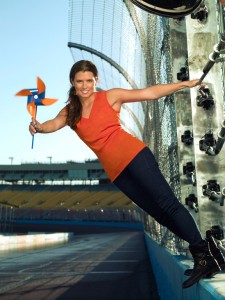 Small in stature, big in talent. And, big in heart. The beautiful Danica Patrick might be a fury on the racetrack, but off the track, she lives life at a slower pace. The relaxed, friendly woman who welcomed me into the richly appointed villa at the Hilton Scottsdale Resort & Villas was tremendously personable and anxious to bring awareness to the fourth-leading cause of death in the United States: chronic obstructive pulmonary disease (COPD).
Small in stature, big in talent. And, big in heart. The beautiful Danica Patrick might be a fury on the racetrack, but off the track, she lives life at a slower pace. The relaxed, friendly woman who welcomed me into the richly appointed villa at the Hilton Scottsdale Resort & Villas was tremendously personable and anxious to bring awareness to the fourth-leading cause of death in the United States: chronic obstructive pulmonary disease (COPD).
For the past year, Patrick has been part of the DRIVE4COPD campaign, a group of professional entertainers and sports figures actively spreading the word on COPD and encouraging people to not disregard the symptoms, which are often written off as signs of age or other illnesses. COPD is a progressive disease that can take the form of emphysema or chronic bronchitis. Lung function decreases over time, and though COPD can be slowed down, it is irreversible.
Danica Patrick the race car driver is impressive, with a professional resume that spans the Indy and NASCAR arenas across much of the world. Patrick boasts wins in races like Japan’s Indy 300 and accomplishments to which other women—and men—in the racing world aspire.
Danica Patrick the person is just as impressive, and we get a little glimpse into the life of this popular sports figure and the battle she is helping to wage against a silent killer that claims thousands of lives every year.
North Valley Magazine: What motivated you to begin competing in NASCAR?
Danica Patrick: Really, it was just my contract year, and I thought that the racing just looked really fun and something that I wanted to try and see if I could do. And so then the opportunity came, and a lot of the ability to do it really came from the relationship between GoDaddy and Junior Motorsports and Dale Jr. because they sponsored him the year before. So, it made the transition really easy because GoDaddy is a sponsor on my Indy car, and one of the things faced in racing is sponsors and competing sponsors and categories. And so it really made the transition really easy, and I got to run the 7 car in both series—the Number 7 GoDaddy car—so it made sense.
NVM: My favorite number.
DP: Yeah. Lucky Number 7.
NVM: What is next for you on the racing circuit?
DP: Well there are two more races left this season. Then my schedule will look very similar next year, with a full Indy program with Andretti Autosport, and then it will be another part-time year in Nationwide that’s going to be twelve to fourteen races again next year. And then after that, I’ll have to make some decisions as to what I want to do. Indy car, NASCAR—I like both of them, but for different reasons. So when I make my decision, I’ll take into account all kinds of things—the Indy car schedule, the direction of the series itself, the team that I’m driving for. Everything, you know. They’re just different. They really are just different.
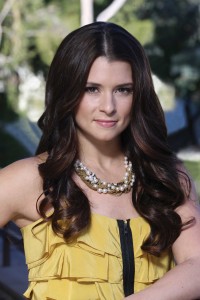 NVM: How do you balance the racing, the DRIVE4COPD campaign, and the other professional ventures with your personal life?
NVM: How do you balance the racing, the DRIVE4COPD campaign, and the other professional ventures with your personal life?
DP: Well, this year is a much busier year for me than ever before, as I used to only do sixteen or seventeen races a year and I think thirty-one is how many I’ll have done this year; so it’s a much busier year. But my point is, it’s not fifty-two weeks and it’s not every day of the week, so you have a lot of other time other than just the racing. So it allows me to do things like this, and things for my sponsors, and other things. Time allows it.
It’s nice that I have the ability and the opportunity. Some people don’t. I’m lucky. I’m lucky like that. I have sponsors that want me to do things for them. And I have a platform [from which] I can do things like this and bring awareness to something that’s important. Not everyone has that ability.
NVM: What is your personal philosophy of facing opposition not just on the racetrack but also in the media and in life in general?
DP: Well, I just do everything I can to prepare well, to be knowledgeable—to just do everything possible so that in the end, if it doesn’t work out, I don’t think to myself, “Well, if I’d just tried a little harder or prepared better, I could’ve been a better me.” But I don’t do that. I always try and make sure that I do everything possible to prepare for success. I know that sounds like such a cheesy sort of…sounds like a seminar, kind of, but…
NVM: Some clichés are actually applicable.
DP: Yeah. And they’re real. That’s why they exist. So, prepare for success. Prepare to do the best you can so that when your preparation meets the opportunity, you know what to do and you’re ready. And then, once you’ve done that, what can you say past that? You can’t be mad at yourself, unless you just want to be mad at your abilities, which is, you know, a tough thing. And sometimes I can be mad at my abilities, wishing I was more superhuman and could do more.
 NVM: How long have you been involved with GoDaddy? What upcoming projects are in the works? What has your experience been?
NVM: How long have you been involved with GoDaddy? What upcoming projects are in the works? What has your experience been?
DP: [GoDaddy has] been a sponsor since 2007. They were associates, like a second sponsor. My primary back then was Motorola. So, for three years, they were an associate sponsor, and then when Motorola went away, there was an opportunity for them to step up, and I know that they had always wanted to. They’re a big, flashy company and I know that they had always wanted to be the primary if they could. Which is another great situation, and I’m lucky I have that. So, this year was the first year they were a primary for me, and like I said earlier, they’re primary on both Indy and the stock car.
And what’s next? Super Bowl commercials. Super Bowl’s coming up quickly. As you know, with GoDaddy, you never know what they’re going to end up choosing, and then there’s always an approval process and everything. But they’re an incredibly successful company. It’s nice to be associated with success like that.
With GoDaddy, it’s always new stuff; they’re always looking for interesting ways to draw people to the Web site. It was really cool—earlier in the year, they did a competition online where everybody sent in their own videos, their own commercials, and they chose winners and the winner won like $100,000. It was really fun. Bob [Parsons], the owner, and I sat down, and we basically rated them all. And so, I was in on the choice. It was cool.
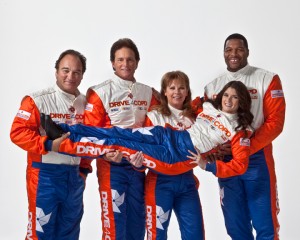 NVM: What do you enjoy most about Scottsdale? What do you miss about it when you’re traveling?
NVM: What do you enjoy most about Scottsdale? What do you miss about it when you’re traveling?
DP: I’m from Illinois, and so the first thing everyone would say, and especially at this time of the year, is just how wonderful it is outside. It’s always sunny. You can always bank on a good day. You can plan things. And when you live in the Midwest or Seattle or somewhere like that, you can’t plan on that kind of stuff because you’re not sure if it’s going to rain. It’s always beautiful here. There’s always something to do. It’s an outdoorsy kind of city with hiking and lots of trails. There are lots of great restaurants. It’s just a really good city. I really like it.
NVM: The media is great an creating images for high-profile sports and entertainment figures. How do you deal with that—how do you present yourself as Danica?
DP: I always try and make sure that I show people a little bit of my personality and be honest in my interviews. I live in a world where people have to find a way to relate to me and to cheer for me, and so it’s important for them to find some kind of common ground or interest they have in you. So, the best thing you can do is just show them a little bit of your personality every time and be honest and not cheesy and not cookie-cutter. You know, I have very short little snippets of time that people get to know me on TV, so I try to make the most of them.
NVM: Is there any thing about you that people might be surprised to know?
DP: I think people usually don’t…well, I think there’s a misconception that I’m really serious, or…angry or something. Because while I’m doing my job, I’m intense, and I’ve been known to get a little fiery at times. So people probably don’t really know that I’m pretty relaxed and I’m not very funny, but I try to be. People don’t really know that side of me. And people also don’t realize that I’m really feminine away from the track, and girly. I like to go shopping and get pedicures and, you know, all kinds of stuff! I like to get dressed up. I like getting my hair and makeup done. I mean, all of that stuff. I mean, I do love sports, but I have two different sides to me, for sure. And usually, it’s an interview at the track and they’re asking me about racing. But I’m fortunate that I get the ability every now and again to show a different side to me.
NVM: What began your interest in creating awareness for COPD?
DP: My grandma had COPD. She passed away in her early sixties, and it’s really sad to see how much people really suffer with this disease. I get a lot of feedback from other people, too, about how sad it is to see their family members suffering at the end. And she was on oxygen twenty-four hours a day and she couldn’t even walk—she was in a wheelchair; and she lost so much weight. So, since [COPD] is the fourth-leading cause of death in this country, I think it deserves some attention, some awareness. It kills more people than breast cancer and diabetes together, which is pretty amazing. People don’t know that. Go to DRIVE4COPD.COM and take the five-question screener. That’s important. And have your friends and family do it.
NVM: Did you approach the organization, or did they approach you? How did you become involved with DRIVE4COPD?
DP: They approached me, and there was obviously that connection. They had a lot of motivation to bring awareness to this, and it was a perfect fit.
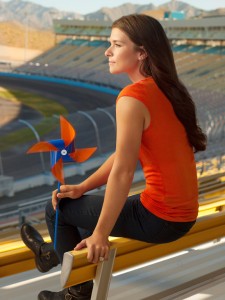 NVM: Why do you think that COPD gets significantly less attention than some of the better-known diseases?
NVM: Why do you think that COPD gets significantly less attention than some of the better-known diseases?
DP: I think it’s because the symptoms can be written off to old age and lack of fitness so easily because it’s getting out of breath, and you get older and just think, “I’m out of shape.” Doing normal things like walking or going up the steps—you shouldn’t get out of breath from those kinds of things. [Other symptoms include] coughing up stuff and phlegm. Also, I think there’s probably an [embarrassment] element to it, since a lot of it is caused by smoking—and it doesn’t take very much. I think being in your local bar as a 21-year-old can almost do the trick; but anything over 100 cigarettes—that’s not very much—can put you at risk. So there’s an element of it that’s self-induced, and that’s probably a little bit embarrassing. You know, cancer’s one thing—when you get a certain cancer and there’s presumably nothing you could have done or at least nothing obvious, anyway. So, like I said, the symptoms are not obvious enough. It’s not like you have a tumor growing out of your skin or anything like that. And awareness—just pure awareness—people just don’t know about the disease and don’t take their symptoms seriously. That’s my opinion. It might not be a medical answer.
NVM: How important is it for people to get screened? How important is early diagnosis?
DP: Very important, because the disease is progressive; so the longer it goes undiagnosed, the worse it gets. And if you continue with the same habits you do and don’t do anything about it, your lung function continues to get worse, and that’s irreversible. There’s no cure for this. It’s not reversible. But you can very much slow down the progression of it so that you can live a normal life.
NVM: Talk a little about February’s second annual DRIVE4COPD 300.
DP: Yes. So, it will again be at the International Raceway at Daytona, which has the biggest race of the year for NASCAR, the Daytona 500. It runs the day before the Daytona 500. And I’ll be in it again.
SIDEBAR
What you should know about COPD, according to Dr. Brian Carlin, MD, Pulmonary and Critical Care Medicine, Drexel University School of Medicine.
 NVM: What are the top three symptoms that might indicate you have COPD?
NVM: What are the top three symptoms that might indicate you have COPD?
Dr. Brian Carlin: Shortness of breath (at rest or with exercise), cough (of any type), and sputum (mucus) production.
NVM: What are the three main causes of COPD?
BC: By far and away, the biggest cause of COPD is smoking. This is followed by environmental causes—inhaling toxins, wood-smoke inhalation—and a hereditary genetic abnormality, for example, alpha-1-antitrypsin deficiency [a genetic disorder that affects pulmonary activity].
NVM: What can be done to help alleviate symptoms of or slow down the progress of COPD?
BC: There are both pharmacologic and nonpharmacologic interventions. Various types of pharmacologic agents including inhaled long-acting beta agonist and anticholinergic medications have been shown to improve symptoms and help to slow the progression of COPD. In some patients, inhaled steroids have also been shown to be helpful to alleviate symptoms and slow the progression of COPD. There are also several nonpharmacologic interventions that have been shown to be beneficial for patients with COPD. Preventive measures such as good hand-washing techniques, avoidance of other people who are ill, and the routine use of vaccinations are important. Pulmonary rehabilitation is a very effective modality that has been shown to improve overall quality of life, reduce the level of shortness of breath, and improve exercise tolerance and capacity.
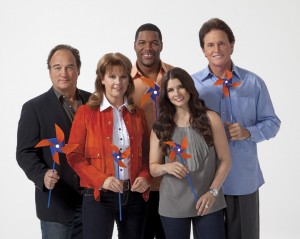 NVM: What currently are the main points of research?
NVM: What currently are the main points of research?
BC: The main focus of the current research in COPD currently involves investigations regarding earlier detection of the illness [prior to when the patient develops symptoms], evaluating the genetic variability of developing the disease—for example, why do some people who smoke cigarettes develop COPD and some do not, and why is there a difference between men and women in regards to the illness?—and evaluating newer methods—medication and other—to help reduce the symptoms and slow the progression of the illness.
Related posts
Leave a Comment
You must be logged in to post a comment.






